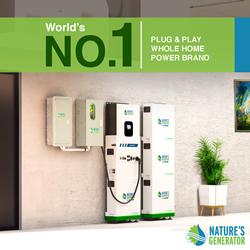Harnessing Waste for Energy: Advancing Europe's Waste-to-Energy Initiatives
Waste is delivered to a WtE facility where it goes through a rigorous sorting process to remove recyclables and hazardous materials. The remaining waste is then incinerated in a controlled environment, generating heat. This heat is used to create steam, which powers turbines to generate electricity. The remaining ash from the combustion process can also be used for further energy production or landfilling,
waste-to-energy scheme
The waste-to-energy (WtE) scheme involves incinerating waste to recover energy generated. This process converts waste into steam or electricity used to power homes and industries through combustion. Similar to how coal, oil, or natural gas is burned in boilers for electricity generation, waste serves as a fuel source for power generation.
In recent years, the European Union (EU) has been gradually shifting away from supporting WtE incineration due to its perceived carbon-intensive nature, which conflicts with emissions reduction goals and the transition to a circular economy. The EU's Circular Economy Action Plan targets a 50% reduction in residual waste by 2030, and the Renewable Energy Directive stipulates that renewable energy support for waste incineration is contingent upon meeting separate waste collection requirements.
Leading European financial institutions are now excluding WtE incineration from their sustainability strategies and funding priorities, favoring waste prevention, reuse, and recycling initiatives instead. Even the EU's Recovery and Resilience Facility, providing €672.5 billion in funding, prohibits measures that could harm environmental objectives significantly.
Despite these shifts, WtE incineration remains integral to waste management in select European nations. For instance, Sweden utilizes waste as fuel in district heating systems, with up to 60% of Uppsala's district heating sourced from waste. Mitsubishi Power Europe also supplies comprehensive WtE incineration systems to European clients.
In conclusion, while WtE incineration has historically played a crucial role in European energy and waste management strategies, the EU is actively moving toward more sustainable waste management solutions that emphasize the waste hierarchy and circular economy principles.
Click Here to Get More Information
How Waste-to-Energy Works
Waste is delivered to a WtE facility where it goes through a rigorous sorting process to remove recyclables and hazardous materials. The remaining waste is then incinerated in a controlled environment, generating heat. This heat is used to create steam, which powers turbines to generate electricity. The remaining ash from the combustion process can also be used for further energy production or landfilling,
Benefits of Waste-to-Energy
- Reduces Landfill Waste: WtE plants can significantly reduce the amount of waste that is sent to landfills. This helps to conserve landfill space and reduces the environmental impacts of landfills, such as methane emissions and groundwater contamination.
- Generates Energy: WtE plants can generate renewable energy from waste that would otherwise be landfilled. This can help to reduce reliance on fossil fuels and improve energy security.
- Reduces Greenhouse Gas Emissions: While WtE incineration does produce some greenhouse gas emissions, it is generally less than those from landfills or from the production of fossil fuel-based energy.
5 Waste to Energy Plants in Europe
- Dublin, Ireland: Conducted advanced basic and detailed engineering for the seawater cooling system (Capacity: 600,000 tons per year, Power: 58 megawatts electrical).
- Poznan, Poland: Managed advanced basic and detailed engineering for the water/steam cycle installation (Capacity: 216,000 tons per year, Power: 18 megawatts electrical and 34 megawatts thermal).
- Buckinghamshire, UK: Executed detailed engineering for the plant's piping (Capacity: 300,000 tons per year, Power: 29.4 megawatts electrical and 6.6 megawatts thermal).
- Severnside, UK: Oversaw detailed engineering for the electrical installation (Capacity: 350,000 tons per year, Power: 37 megawatts electrical and 10 megawatts thermal).
- Hartlebury, UK: Managed advanced basic and detailed engineering for the water/steam cycle installation (Capacity: 200,000 tons per year, Power: 20.4 megawatts electrical and 3 megawatts thermal).
Europe Waste to Energy Industry Growth Factors
Strict environmental regulations: European regulations are becoming increasingly stringent regarding greenhouse gas (GHG) emissions and landfill diversion. Waste-to-Energy plants offer a way to reduce reliance on landfills and generate energy from waste that cannot be recycled.
Growing need for secure and renewable energy sources: Europe is seeking to reduce its dependence on fossil fuels and increase its use of renewable energy sources. WtE plants can provide a reliable and baseload source of renewable energy.
Increasing waste generation: The amount of waste generated in Europe is rising due to population growth and urbanization. WtE plants can help to divert waste from landfills and reduce the environmental impact of waste disposal.
Advancements in WtE technology: Newer WtE technologies are becoming more efficient and cleaner, with lower emissions and higher energy output. This is making WtE a more attractive option for waste management.
Government support: Many European governments are providing financial incentives for the development of WtE facilities. This is helping to make WtE projects more economically viable.
The Future of Waste-to-Energy in Europe
The role of WtE in Europe's waste management strategy is likely to continue to evolve. The European Union (EU) is setting increasingly ambitious waste reduction and recycling targets. This means that the amount of waste available for incineration is likely to decrease. However, WtE plants are still likely to play a role in managing residual waste that cannot be recycled. New technologies are also being developed to improve the efficiency and environmental performance of WtE plants.
About Us
Vision Research Reports is a Canada/India based company and one of the leading providers of strategic market insights. We offer executive-level blueprints of markets and solutions beyond flagship surveys.
Featured Product

Nature's Generator MyGrid 10K
A 10,000W plug & play whole-home generator with a 10kWh LiFePO4 battery for reliable backup power. Features easy setup, flexible 120V/208-240V input, and solar/wind charging. Expandable with extra batteries or solar panels, and can pair two units for 20,000W for even larger energy needs. Powers your home during power outages, reduces electricity costs, and supports sustainable energy.
